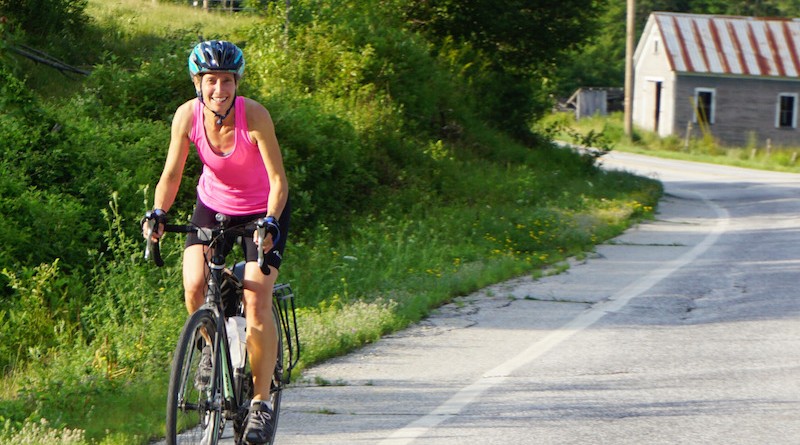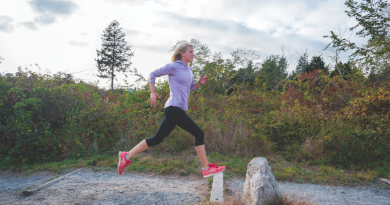Speak Up: The New Road Rules For Safe Riding And Driving
In 2015, four cyclists died in six months on Vermont’s roadways. Since then, Vermont has worked to honor these cyclists–and all of the state’s riders–with new rules, which took effect last July, that promote safety on the road. This spring, remember the riders we lost at the Kelly Boe Ride, (May 8) and Richard’s Ride (May 20). Both Kelly Boe and Richard Tome were killed on the road in April, 2015. As riding season starts up again, here’s what you need to know as a rider and a driver.
*Story updated April 28, 2017.
By Emily Boedecker
Getting on a bike is something nearly every one of us can do right from our door. Whether you are a 12-year old heading to school, a 48-year-old nailing a century, or an 85-year-old on her daily ride, biking is for just about everyone. Whatever adventure you choose —a heart-pounding ascent up and over App Gap or Lincoln Gap, a gentle ride in the rolling hills of Pawlet, a trip along the legendary Island Line Rail Trail, or a shopping run to your local farmers’ market—you ought to be able to take it for granted that you’ll come home safe and happy.
But the four fatal crashes last year—the four bicyclists who did not come home—shook us all. Some of us were back out riding the very next day. Some of us are still hesitant to return to the roads. One thing is certain, though: Our roads still belong to all of us, whether we are biking, running, walking or driving. They are close to our homes, they take us to our schools and our parks, they get us to our jobs, they connect us to the trails in the woods that we love, and they connect us to our communities. We cannot and will not give up on them.
Thanks to the support of Representatives Mollie Burke and Willem Jewett, the Vermont State Police, DMV and VTrans, Vermont laws regarding bike safety saw a significant update on July 1, 2016. Previously, the law required motor vehicle operators to exercise ‘due care’ when passing vulnerable users (people on bikes, on foot, on personal mobility devices, riding or herding animals). “Due care” may be well understood in a legal context, but it is difficult to teach—and to enforce.

Now, the law includes the following crucial phrase: “Increasing clearance to a recommended distance of at least four feet, to pass the vulnerable user safely.” If any part of a vehicle, including the mirrors, is close enough that a bicyclist or pedestrian with outstretched arm could touch it, that vehicle is way, way too close for safety.
Last year’s fatal crashes included a number of other factors that Vermont’s law enforcement agencies are working hard to control, among them speeding, distracted driving, driving on a suspended license, and driving while under the influence of alcohol, legal or illegal drugs.
Act 147 and Act 158 also increased the use of ignition interlock devices to prevent drunk driving, increased penalties for driving on a suspended license, clarified the driver’s responsibility to yield when entering the roadway and turning left, and clarified a bicyclist’s right to ride to the left to safely avoid hazards.
The law now says, ‘Bicyclists generally shall ride as near to the right side of the improved area of the highway right-of-way as is safe, except that a bicyclist……shall ride to the left when making a left turn…[and]….may ride to the left or in a left lane when taking reasonably necessary precautions to avoid hazards or road conditions.’ In other words, if you need to move out into the travel lane to avoid gravel, glass, potholes, or any other hazard, it is legal for you to do so. What’s more, it is much safer to ride a straight and predictable line than to weave in and out of the shoulder to avoid hazards.
There is one other number that remains at the forefront of my mind: 233. This is the number of reported crashes between motor vehicles and people walking and biking in 2015. This number is still way too high. State statutes and law enforcement notwithstanding, we are not yet doing a good enough job of taking care of each other. That number should—and can—be a whole lot closer to zero.
You know what I hope for? If I am ever asked, ‘Do we need more rules of the road?’ I’d like to be able to say ”No thanks. We’re good. We’re taking care of each other.” I’d love to be able to say to our law enforcement agencies, “Focus on the bad actors: the DUI’s, the texters, the speeders. For the everyday driver and rider, we’ve got it covered. No enforcement needed.” It is my hope that we can learn to take that extra few seconds and to give each other the space needed to share the road safely, and to pass and turn with care and consideration. Together, we can get there.
As a kid riding the narrow lanes of England alongside coal lorries and school buses, I had to abide by my Dad’s two golden rules. If a driver gives you room, make eye contact and raise a hand to say thank you. If they don’t give you enough room, make a special effort to make eye contact and raise a hand to say thank you. No matter what, be visible—and treat others the way you want to be treated.
And there’s one more thing you can do: Be seen. I’m not just talking about hi-visibility clothing and good lights. Many in leadership positions in Vermont don’t see who you—a person who loves to bike—really are. It’s an unfortunate reality that the prevailing view of bicyclists is that we are all speed demon scofflaws who ride in packs and hold up traffic. We know that could not be farther from the truth.
So make a point of telling your senator and your representative who you are and how you ride. And sign up with Local Motion to amplify your voice and join forces with others who feel the same.
Emily Boedecker is the Executive Director, Local Motion – Vermont’s advocate for walking and biking. Visit www.localmotion.org to learn more about the rules of the road, safe riding, and to stand up and be seen as a member of Vermont’s bicycling community.



